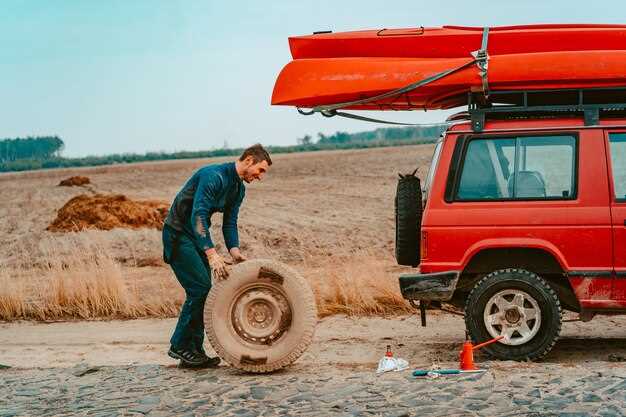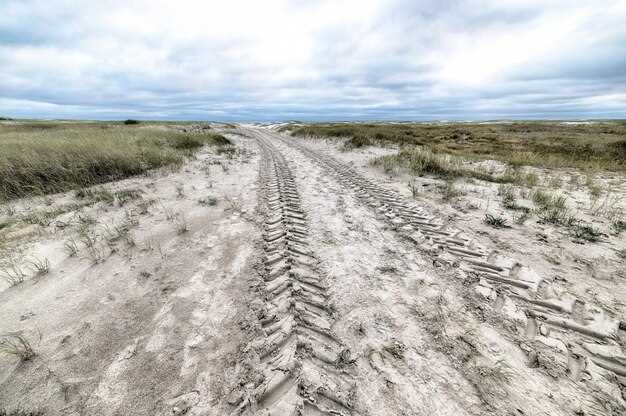
When it comes to off-road adventures, the durability and functionality of your vehicle’s accessories can make all the difference. Among these accessories, mud flaps play a crucial role in protecting your vehicle from mud, rocks, and debris that are often encountered on rough terrains. Selecting high-quality mud flaps that can withstand harsh conditions is essential for any off-road enthusiast.
The right mud flaps not only enhance the vehicle’s appearance but also prevent damage to critical components, such as the undercarriage and paintwork. With so many options available in the market, it’s vital to identify which products offer the best combination of strength, flexibility, and longevity. In this article, we delve into the top mud flaps specifically designed for off-road vehicles, providing you with insights into their features and benefits.
From heavy-duty rubber constructions to custom-fit designs, understanding the key attributes of each type will help you make an informed decision. Additionally, we will explore factors like ease of installation and maintenance, ensuring that your choice provides both protection and convenience. Whether you’re navigating through muddy trails or rocky landscapes, investing in quality mud flaps could prolong the life of your vehicle and enhance your off-road experience.
Choosing Durable Materials for Off-Road Mud Flaps

When selecting mud flaps for off-road vehicles, durability is paramount. The harsh conditions encountered during off-road adventures require materials that can withstand extreme impacts, abrasive materials, and exposure to various weather elements. Here are some key materials to consider:
Polyethylene is one of the most popular choices for off-road mud flaps. Its high resistance to impact and abrasion makes it an excellent option in rugged terrains. Additionally, polyethylene does not absorb water, preventing issues related to rust or corrosion when exposed to mud and moisture.
Rubber is another widely used material known for its flexibility and resilience. Rubber mud flaps effectively absorb shocks and can bend under pressure without cracking. This material offers good wear resistance, making it suitable for vehicles that frequently encounter rocks, debris, and uneven surfaces.
Vinyl is also used in the production of mud flaps due to its lightweight and durable properties. Vinyl is resistant to fading from UV exposure, which is an added benefit for vehicles that spend time in direct sunlight. Furthermore, its flexible nature allows for easy installation and adjustments.
Some manufacturers use reinforced materials, such as combinations of rubber and plastic, to enhance strength further. These composites are designed to provide the best of both worlds, combining flexibility with durability. They can handle severe conditions while still providing a form of protection to the vehicle’s body and undercarriage.
When deciding on mud flap materials, consider the specific off-road conditions your vehicle will face. Choosing the right material not only prolongs the life of your mud flaps but also ensures your vehicle remains protected from harsh elements during your adventures.
Installation Tips for Optimal Performance of Mud Flaps

Proper installation of mud flaps is essential to ensure their effectiveness and longevity. Follow these guidelines to achieve optimal performance:
1. Choose the Right Location: Before installation, identify the correct mounting point on your vehicle. Typically, mud flaps should be positioned behind the tires, extending downward to provide adequate coverage. Make sure they do not obstruct any moving parts or interfere with the wheels.
2. Use Quality Hardware: Ensure that the hardware provided with your mud flaps is of high quality. Using corrosion-resistant screws and brackets will enhance durability and prevent rust, especially when exposed to harsh off-road conditions.
3. Clean the Surface: Thoroughly clean the area where the mud flaps will be installed. Remove dirt, grease, or any existing debris to create a smooth surface for better adhesion and a secure fit.
4. Pre-Drill Holes: If your mud flaps require drilling, pre-drilling holes can help avoid any damage to the vehicle’s body. Use the appropriate size drill bit and ensure the alignment is correct prior to securing the mud flaps.
5. Maintain Clearance: When installing mud flaps, maintain adequate clearance from the tires. This prevents excessive wear on the flaps and allows for proper movement of the wheels, especially on uneven terrain.
6. Follow Manufacturer Instructions: Always adhere to the installation instructions provided by the manufacturer. These guidelines are tailored for specific products and will ensure the best fit and most effective performance.
7. Check Alignment: After installation, double-check the alignment of the mud flaps to ensure they are straight and properly positioned. Misalignment can reduce their effectiveness and increase the risk of damage.
8. Regular Maintenance: Inspect mud flaps regularly for signs of wear or damage. Tighten loose screws and clean the flaps to maintain their performance. Prompt attention to any issues prolongs their life and effectiveness.
By following these installation tips, you can enhance the performance of your mud flaps, ensuring they effectively protect your vehicle from mud, dirt, and debris while off-roading.
Maintaining Mud Flaps for Longevity in Harsh Conditions
To ensure the durability and effectiveness of mud flaps on off-road vehicles, regular maintenance is essential. Start by inspecting the mud flaps frequently for signs of wear and tear, especially after off-road excursions. Look for cracks, abrasions, or detachment from the vehicle. Addressing these issues promptly can prevent further damage and maintain their protective function.
Cleaning the mud flaps is another critical maintenance step. Off-road driving exposes mud flaps to dirt, grime, and debris that can accumulate over time. Use a mild soap and water solution to clean them, avoiding abrasive cleaners that could scratch or degrade the material. Make sure to rinse well and dry completely to prevent moisture retention, which can lead to rust or other deterioration.
Additionally, consider applying a protective coating specifically designed for the material of the mud flaps. This can provide an extra layer of defense against UV rays, chemicals, and harsh weather conditions, ultimately prolonging their lifespan. Reapply the coating periodically, particularly after extended use or exposure to extreme environments.
Another factor that affects the longevity of mud flaps is their proper installation. Ensure that they are securely mounted, with all bolts and screws tightened to prevent movement during driving. Loose mud flaps can be subjected to additional stress and may suffer from damage more quickly.
Lastly, monitor the overall condition of your vehicle’s undercarriage and suspension system. Pay attention to any factors that could contribute to excessive wear on the mud flaps, such as misalignment or suspension issues. Keeping your vehicle in top condition reduces stress on mud flaps and extends their effective life.





